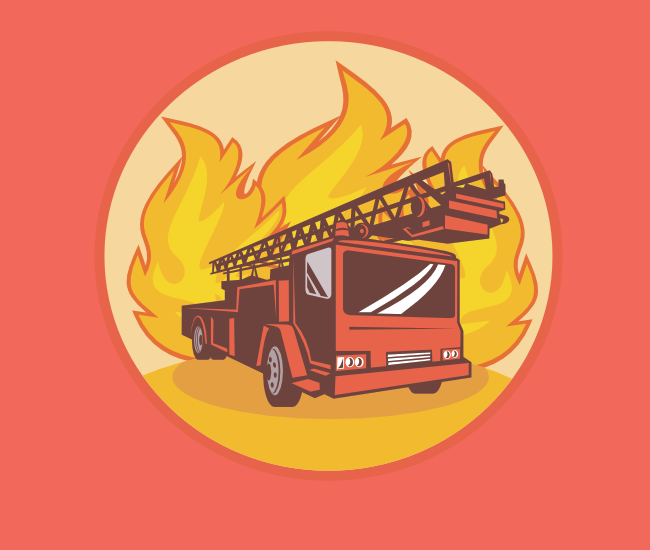Fire departments across the United States have been offering CPR classes for decades. The people who work there are known as “first responders” because they are the first to arrive on the scene of an emergency to help those in trouble. Who better to teach these life-saving techniques than the good men and women who save lives every day, right?
Fire department CPR classes give you all of the tools you need to successfully perform CPR on a person who needs it. What are these tools, though, and who can use them? Let’s take a look.
Which fire departments offer CPR classes?
The first important thing to note is that fire department-led CPR classes vary when it comes to availability. What you have access to depends on your local department, how often they offer classes, and how many people can participate in each class.
Most fire departments hold regular CPR classes, but some may not have many options available. Some may not offer any at all. It is up to you to locate a fire department in your area and see what they have available for you!
What types of CPR classes do fire departments offer?
CPR is not one-size-fits-all. The steps you should follow change depending on the age and medical condition of the person that you are assisting. That’s why most fire departments offer different CPR classes. Let’s look at some of these standard courses and find the right fit for your needs.
Hands-Only CPR/AED/Choking
The most common form of CPR performed by the average bystander is hands-only CPR. In this course, you don’t learn how to give rescue breaths. Instead, they teach you how to perform high-quality chest compressions to keep a person’s blood circulating until emergency personnel arrives on the scene. You also learn how to use an AED (Automated External Defibrillator) to deliver shocks to someone in the event of a cardiac emergency.
These classes typically don’t offer official CPR certification. If you need this certification for a job, this type of CPR class is not for you.
Who is this class right for?
The hands-only CPR/AED class is adequate for the average person who doesn’t have access to the same equipment that healthcare providers do and does not feel comfortable performing mouth-to-mouth resuscitation. This is a good choice if you do not necessarily need an official certification for a job and do not have much time to learn CPR. However, a full CPR course that teaches mouth-to-mouth resuscitation is highly recommended and doesn’t take that much longer.
Heartsaver CPR/AED Class
This is the American Heart Association CPR class offered by most fire departments that results in a CPR certification for lay rescuers. If your job requires you to get CPR certified and you do not work in a healthcare setting, this is a good class for you.
This class teaches you how to perform CPR with rescue breaths on adults, children, and infants, as well as learning how to properly use an AED to shock a person in cardiac distress.
Who is this class right for?
The Heartsaver CPR/AED class is a good fit for anyone who needs an official CPR certificate with an American Heart Association logo on it for their career. Keep in mind that healthcare providers need a higher level of certification but other jobs only require you to be skilled in basic CPR. Some of the careers that use this certificate include:
- Daycare providers
- Nannies
- Teachers
- Bus drivers
- Tour guides
Not every job requires you to be CPR certified, but some do. It is best to be prepared so you can keep doing what you do best!
BLS/CPR for Healthcare Providers
Some fire departments offer CPR and BLS (Basic Life Support) classes for healthcare providers who require this CPR certification for work and licensing requirements. In these classes, you learn how to perform CPR on people of all ages as well as:
- How to perform 2 person CPR
- How to operate a bag valve mask
- Other first aid topics
As you can see, this CPR class type is more involved than a standard CPR course. If you don’t need a BLS/healthcare provider CPR certification, this class is not necessary for you. Most of the additional material that is taught isn’t applicable if you do not have access to the proper medical equipment in a real-life emergency.
Who is this class right for?
As you may have already guessed, the BLS CPR class is meant for healthcare providers. Medical professionals need the highest level of certification possible for these life-saving techniques.
If you are a healthcare provider, this is the right CPR class for you. It’s the only certification that most employers in this field will accept.
Do you have to pay for fire department CPR classes?
Generally, you have to pay for CPR classes, no matter where you enroll. Some fire departments offer them for free but that varies from place to place. The prices are always fair, though, considering the knowledge and skills that you gain and the time that the instructors spend on the class.
In any case, it’s easy to find information about classes offered by the fire departments near you! To access these CPR classes, enroll with your fire department’s program. Typically, they tell you the price of the class upfront so you can decide whether you feel the cost is worth it. In the end, being able to save a life is priceless. There are resources available to almost everyone, so why not get proper CPR training as soon as you can? The life that you save could be that of the person you love most in the world. Disaster can strike anywhere at any time – enroll in a CPR class with your fire department as soon as you can.

